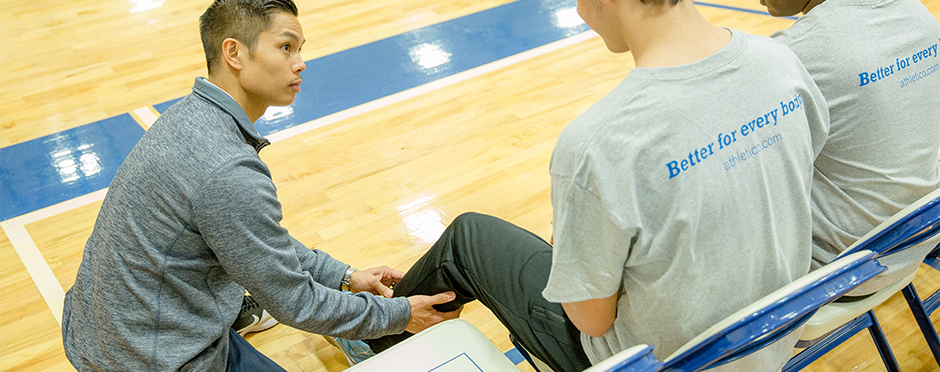
What is a Ruptured Achilles Tendon?
Leave a CommentKevin Durant joined the likes of Steph Curry, Klay Thompson and Draymond Green in the starting lineup for Game 5 of the NBA Finals – this following a 33-day hiatus as he rehabbed a calf strain. His return came with inherent risk – concern for worsening of the initial calf injury or a more severe Achilles tendon injury. In the second quarter, the 30-year-old planted on his right leg to change direction and subsequently went down to the floor clutching the back of his right lower leg. The worst-case scenario for Durant had become a reality, a ruptured Achilles tendon. He underwent successful surgery to address the injury and is expected to miss 9-11 months.
How does a rupture occur?
The Achilles tendon is an important anatomic structure which connects the gastrocnemius and soleus (calf muscles) to the calcaneus (heel bone). The Achilles tendon is the largest tendon in the body and is crucial to facilitate jumping, running, and cutting among other dynamic activities. The specific function of the gastrocnemius, soleus and Achilles tendon is to produce plantar flexion (pointing of the foot/toes downward). In this case, a rupture refers to tearing of the tendon. Achilles tendon ruptures can be partial or complete; the majority of the time, surgery is warranted, however, in some cases conservative rehab will suffice. A rupture of the Achilles tendon is not the only pathology associated with the structure; additional diagnoses include Achilles tendonitis and Achilles tendinosis.
How are Achilles tendon injuries fixed?
The typical treatment course to address Achilles tendon rupture is usually of the surgical variety.1 Surgery to address these injuries involves the suturing of opposing ends of the tendon back together or re-anchoring of the tendon to the calcaneus. Following surgery, individuals will undergo a period of immobilization in a splint in order to protect the repair. After splinting, the patient is transitioned to a boot and then to a traditional shoe. Physical therapy is initiated following clearance from the patient’s physician and involves a regimented post-operative protocol that includes interventions to gradually improve strength, range of motion, function and to reduce pain. When considering conservative care for a partially torn Achilles tendon, progression through rehab is very similar, with a heavy emphasis on calf strengthening.
How long before an athlete can return to play?
Return to play (RTP) following an Achilles tendon rupture and subsequent surgery takes 9-12 months with an average RTP of 11.9 in professional athletes.2 Return to play following less severe diagnoses such as Achilles tendonitis and Achilles tendinosis carry shorter return to play timetables.
While Kevin Durant faces a long recovery timeline, physical therapy will play a role in helping him get back on the court. The best part about physical therapy is that you don’t have to be a professional athlete to benefit from it. Physical therapists specialize in rehabilitation of conditions of the musculoskeletal system. If you have an injury or unusual aches and pains, schedule an appointment at a nearby Athletico clinic so we can help you feel better and make your comeback.
The Athletico blog is an educational resource written by Athletico employees. Athletico bloggers are licensed professionals who abide by the code of ethics outlined by their respective professional associations. The content published in blog posts represents the opinion of the individual author based on their expertise and experience. The content provided in this blog is for informational purposes only, does not constitute medical advice and should not be relied on for making personal health decisions.
References:
1. Gulati V, Jaggard M, Al-Nammari SS, et al. Management of achilles tendon injury: A current concepts systematic review. World J Orthop. 2015;6(4):380–386. Published 2015 May 18. doi:10.5312/wjo.v6.i4.380
2. Yang J, Hodax JD, Machan JT, et al. Factors Affecting Return to Play After Primary Achilles Tendon Tear: A Cohort of NFL Players. Orthop J Sports Med. 2019;7(3):2325967119830139. Published 2019 Mar 12. doi:10.1177/2325967119830139
